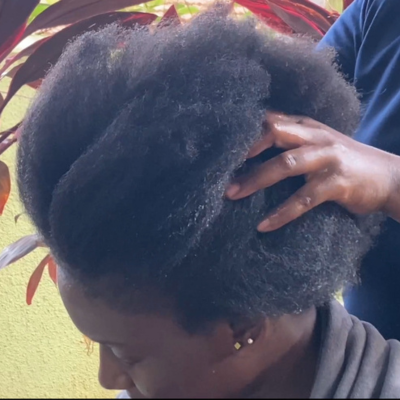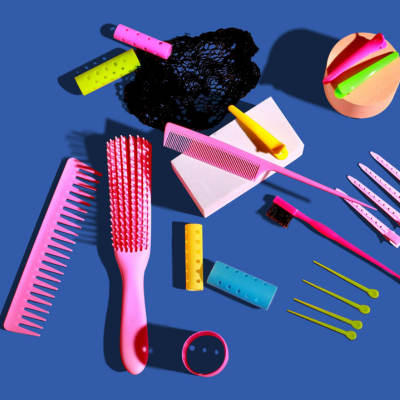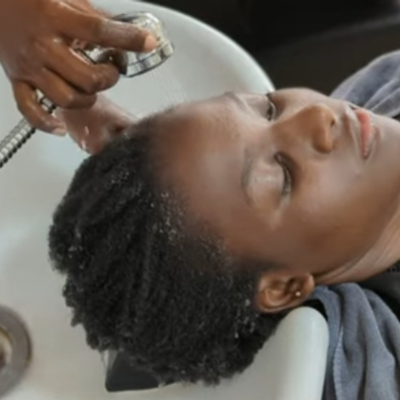- Support 24/7
- +1 (480) 468-4543
- livara@mylivara.com
How to Conquer Seborrheic Dermatitis of the Scalp

5 Important Reasons Why You Need To Give Your Hair A Break Between Protective Styles
April 9, 2024
How to Know When to Trim Your Hair Ends
April 11, 2024
If you’ve ever found yourself grappling with persistent scalp irritation, accompanied by flaking and redness, you might be experiencing seborrheic dermatitis. This common scalp condition affects millions of individuals worldwide and can significantly impact one’s comfort. Let’s delve into the intricacies of seborrheic dermatitis as a scalp condition, exploring its causes, symptoms, and strategies for effective management.
Understanding Seborrheic Dermatitis of the Scalp
Mostly affecting the scalp, seborrheic (seb-o-REE-ik) dermatitis is a common skin disorder. It results in skin inflammation, scaly areas, and persistent dandruff, according to Mayo Clinic. Typically, it affects greasy parts of the body like the chest, eyebrows, ears, eyelids, and the sides of the nose. Most commonly, this condition affects the scalp.
Although this condition can be bothersome, it is not transmissible and does not result in irreversible hair loss. Dandruff, seborrheic eczema, and seborrheic psoriasis are other names for seborrheic dermatitis. It is referred to as the cradle cap in infants.
Common Symptoms
The common symptoms of seborrheic dermatitis of the scalp include:
- Flaky, greasy scales or plaques on the scalp
- Itching, burning, or stinging sensations
- Oily or crusty patches on the scalp surface
- Hair loss or thinning, particularly in severe cases
Potential Causes
Several factors may contribute to the onset or exacerbation of seborrheic dermatitis of the scalp:
1. Malassezia Yeast Overgrowth: Malassezia, a type of yeast that naturally inhabits the scalp, has been implicated in the pathogenesis of seborrheic dermatitis. An overgrowth of this yeast can trigger an inflammatory response, leading to the characteristic symptoms of the condition.
2. Genetics: People with a family history of seborrheic dermatitis may be more likely to develop the condition.
3. Hormonal Influences: Hormonal changes, such as those occurring during puberty, pregnancy, or in individuals with certain endocrine disorders, may exacerbate seborrheic dermatitis symptoms.
4. Environmental Factors: Environmental factors, including cold, dry weather, stress, and certain hair care products or cosmetics, can also exacerbate symptoms and trigger flare-ups.
Effective Management Strategies
While seborrheic dermatitis of the scalp is a chronic condition without a cure, several management strategies can help alleviate symptoms and improve overall scalp health:
1. Treatments with Active Ingredients: Use shampoos containing anti-dandruff active ingredients like pyrithione zinc (Selsun Blue for Itchy Dry Scalp, Neutrogena T/Gel Daily Control Dandruff Shampoo, Head & Shoulders), Selenium sulfide (Dandrex, Head & Shoulders Clinical Strength, Selsun), and Ketoconazole (Keto-Plus, Nizoral). These active ingredients help reduce inflammation on the scalp and relieve itching.
Wash your scalp with them regularly to remove excess oil and debris without exacerbating inflammation. Avoid harsh soaps or abrasive scrubs that can further irritate the scalp.
2. Scalp Moisturization: Keep the scalp well-hydrated with water-based moisturizers like our Tsavorite Spritz Moisturizer Hair Spray to prevent dryness and flaking.
3. Incorporate Natural Ingredients: In addition to the above strategies, incorporating natural ingredients known for combatting dandruff like menthol can help you manage the condition better. Menthol-infused hair products, such as the Livara Tsavorite Clarifying Treatment Hair Shampoo, can provide soothing relief and promote scalp health.
Menthol, derived from peppermint or other mint oils, offers cooling and anti-inflammatory properties, making it an ideal ingredient for calming scalp irritation associated with seborrheic dermatitis. When used as part of your hair care regimen, menthol-infused products can provide a refreshing sensation while helping to alleviate itching and redness. Make sure to patch test the product in case of any sensitivities.
4. Avoidance of Triggers: Identifying and avoiding potential triggers is also essential for managing seborrheic dermatitis of the scalp effectively. In particular, certain ingredients commonly found in hair care products can exacerbate symptoms and irritate the scalp. These include:
• Sulfates: Harsh surfactants found in many shampoos and cleansers, sulfates can strip the scalp of its natural oils and contribute to dryness and irritation.
• Parabens: Preservatives commonly used in cosmetics and personal care products, parabens have been associated with allergic reactions and skin sensitivity in some individuals.
• Artificial Fragrances: Synthetic fragrances added to hair care products for scent can contain allergens and irritants that trigger scalp inflammation and exacerbate seborrheic dermatitis symptoms.
By opting for gentle, fragrance-free hair care products formulated with natural ingredients, you can minimize the risk of irritation and promote scalp health.
Bottomline
To manage seborrheic dermatitis of the scalp, it’s important to understand its causes and triggers. Use medicated shampoos, gentle cleansers, and moisturizers to soothe symptoms and promote scalp health. Incorporating natural ingredient-based products can also help. Don’t forget to consult a dermatologist for personalized treatment recommendations.



